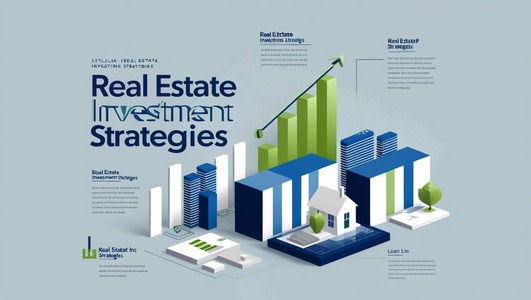How to Get Into Real Estate Investing with No Credit or Experience
Real estate investing is one of the safest and most profitable ways to build long-term wealth. If you’ve ever wondered how to get into real estate investing, you’ve come to the right place. In this article, we’ll explain step-by-step how to get started in this world, even if you have no prior experience.
What is real estate investing?
Real estate investing involves acquiring properties for the purpose of obtaining financial returns, whether through rental, property appreciation, or buying and selling. Unlike other forms of investment, such as the stock market, real estate offers a tangible asset that tends to How to Get Into Real Estate Investing
Advantages of investing in real estate
Before you begin, it’s important to understand why so many people are looking into How to Get Into Real Estate Investing as a way to secure their financial future:
• Consistent passive income: By renting out properties, you can generate a stable source of monthly income.
• Appreciation in value: Over time, property values tend to increase.
• Tax advantages: There are tax deductions associated with real estate investments.
• Financial leverage: You can use external financing to acquire higher-value assets.
• Portfolio diversification: Investing in real estate reduces overall risk by not relying solely on How to Get Into Real Estate Investing.

Step 1: Basic Financial Education
Before investing, you should have a good grasp of financial concepts such as:
Cash flow
Return on investment (ROI)
Financial leverage
Operating costs
Good debt vs. bad debt
You can start by reading books like “Rich Dad Poor Dad” or “The Millionaire Real Estate Investor.” There are also free online courses that teach the basics of How to Get Into Real Estate Investing for beginners.
Step 2: Set clear goals
Define why you want to invest:
❶ Do you want monthly passive income?
❷ Are you seeking financial independence?
❸ Are you planning for a comfortable retirement?
Having a clear goal will help you choose the right strategy.
Step 3: Assess your financial situation
Before taking the first real step, review your financial capacity:
❶ Do you have a good credit score?
❷ How much capital can you invest?
❸ Are you willing to go into debt to purchase a property?
It’s possible to get started in real estate with little money, but you’ll need to be more creative with your strategies (partnerships, private financing, etc.).
Step 4: Choosing the Right Real Estate Investment Strategy
There are several ways to invest in real estate. Here are a few:
1. Rental Properties (Buy and Hold)
This involves purchasing a property to rent out and generate monthly income. It’s ideal for those seeking passive income.
Advantages: Monthly cash flow, long-term appreciation.
Disadvantages: Maintenance, tenant management.
2. Buy, Remodel, and Sell (Fix and Flip)
You acquire properties in poor condition, improve them, and sell them for a higher price.
Advantages: Quick profits.
Disadvantages: High risk, requires capital, and remodeling experience.
3. Commercial Real Estate Investment
Retail spaces, offices, warehouses, or shopping centers. They usually offer higher rents.
Advantages: Long leases.
Disadvantages: High initial investment, sensitivity to the economic cycle.
4. Investing in REITs (Real Estate Investment Trusts)
These are funds that invest in real estate. You can purchase shares in these funds, much like investing in the stock market.
Advantages: Lower initial capital, liquidity.
Disadvantages: Less control, variable returns.

Step 5: Research the local real estate market
Knowing your local market is crucial for making informed decisions. Analyze:
High-demand areas
Urban growth projections
Safety level
Nearby schools and services
Expected profitability
Tools like Zillow, Idealista, or local websites can help you compare prices, average rents, and trends.
Step 6: Financing and Loans
You don’t need all the money to invest. Here are some options:
Bank mortgages: The most common option.
Private loans: From friends, family, or investors.
Seller financing: The owner finances your payment.
Joint ventures: Partner with someone who has equity.
Carefully evaluate interest rates, terms, and closing costs.
Step 7: Property Analysis
Before purchasing, evaluate whether a property is financially viable. Analyze:
Expected rental income
Operating expenses: Maintenance, taxes, insurance, management
Estimated cash flow
Cap rate (capitalization rate)
ROI (Return on Investment)
An ROI above 8% is considered healthy in most markets.
Step 8: Closing the Purchase
Once you find a suitable property and secure financing, follow these steps:
Make a formal offer.
Have a property inspection.
Have an appraisal with an independent appraiser.
Review the contract and legal documents.
Sign the closing and register the property.
It’s a good idea to have a real estate agent or attorney guide you through this process.

Step 9: Property Management
Once you own your property, you have two options:
Self-management: You’ll be responsible for finding tenants, collecting rent, and making repairs.
Hiring a management company: Ideal if you have multiple properties or limited time.
Good management keeps your property profitable and well-maintained.
Step 10: Scale Your Portfolio
After your first investment, you can reinvest your profits and acquire more properties. This is known as scaling your real estate portfolio.
Tips for scaling: How to Get Into Real Estate Investing
Use the equity in current properties as collateral.
Reinvest cash flow.
Diversify into different types of properties.
Evaluate new geographic locations.
Common Mistakes to Avoid
Not researching the market.
Underestimating maintenance costs.
Not calculating cash flow correctly.
Investing based on emotions rather than data.
Relying too heavily on appreciation in value.
Investing in real estate requires logic, analysis, and a patient approach.
Useful Tools and Resources
ROI and Cash Flow Calculators: Ideal for simulations.
Real estate apps: Zillow, Realtor, Idealista, Fotocasa.
Networking: Agents, appraisers, lawyers, property managers.
Investor communities: Forums, social media groups, or local meetups.
Conclusion: How to Get Into Real Estate Investing
Entering the world of real estate investing can seem intimidating at first, but with education, planning, and action, you can succeed. If you’re wondering how to get started in real estate investing, remember that the first step is to educate yourself and set your goals.
Real estate investing isn’t a get-rich-quick path, but it can offer financial stability, sustained growth, and financial freedom if done correctly. Whether you’re buying to rent, selling, or simply diversifying your portfolio, real estate can be the cornerstone of your financial success.
Credit by Thach Nguyen




